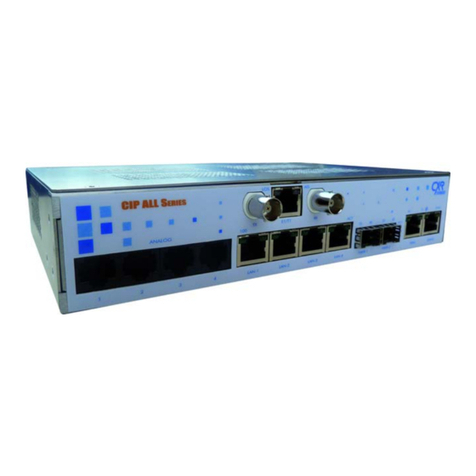
__________________________________________________________
CXR Larus 80-100-400 Issue 1, July 2006 1-1
1 Introduction
_
____________________________________________________________________
1.1 General
1.11 This document is Volume 1 of this series of manuals and describes the CXR
Larus StarClock 200E Expandable T1/E1 Synchronization Timing System and
its theory of operation. This is the expandable version of the system which
uses the Model 54500 shelf is shown in Figure 1-1. This volume isintended for
planners, engineers, and general users.
Installation and operation information for the StarClock 200E relating to
planning and engineering may be found in Volume 2, CXR Larus Manual
80-600-400. It describes backplane wiring, switch settings, testing,
maintenance, and troubleshooting of the system, and is intended for use by
field support engineers, technicians, and craft personnel.
Volume 3, Manual 80-800-400, the Model 54550 Information Management
Card TL1/ITL1 User Manual, provides a discussion of the domestic and
international transaction language used by the system. It also covers
performance monitoring, parameter descriptions,and security commands, and
is intended for use by Control Center personnel. It is recommended that the
TL1/ITL1 operator read this document in its entirety before using the system.
Volume 4, Manual 80-801-400, the Model 54550 Information Management
Card Menu User Manual, provides a discussion of the Windows-based user
interface to the system. It also covers performance monitoring, parameter
descriptions,andsecuritycommands,andisintendedforuse byControlCenter
personnel. It is recommended that the menu operator read this documentinits
entirety before using the system.
NOTE:
StarClock 200E is factory provisioned with either the TL1/ITL1 or menu user interface.




























